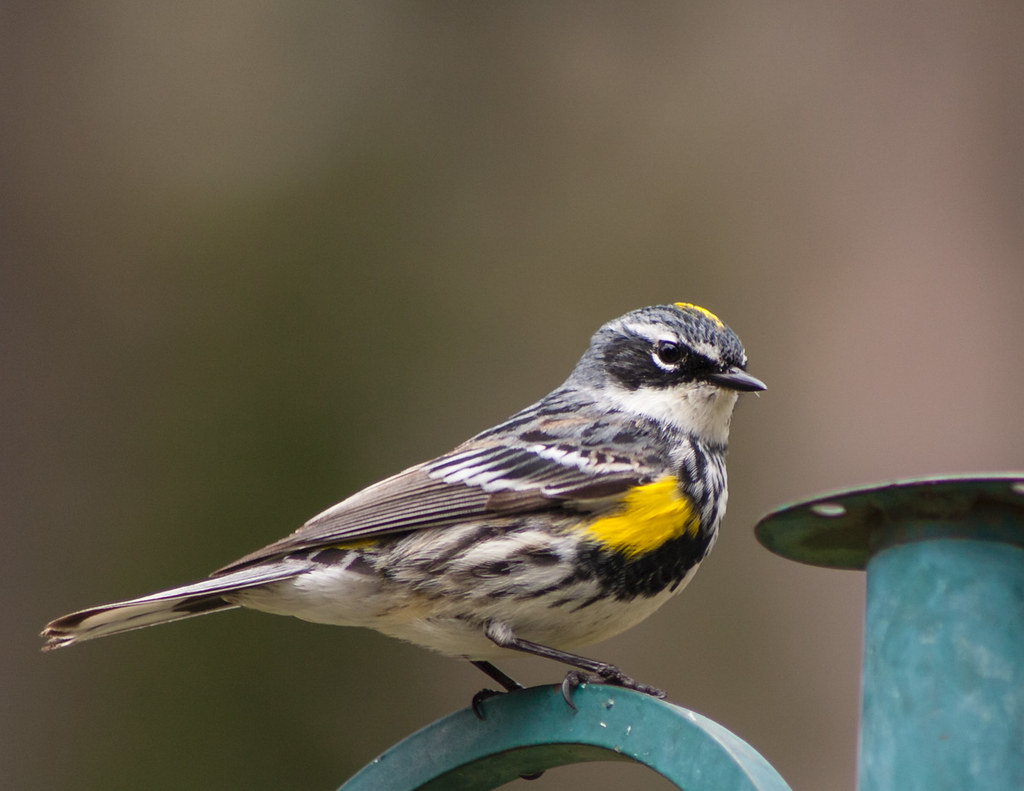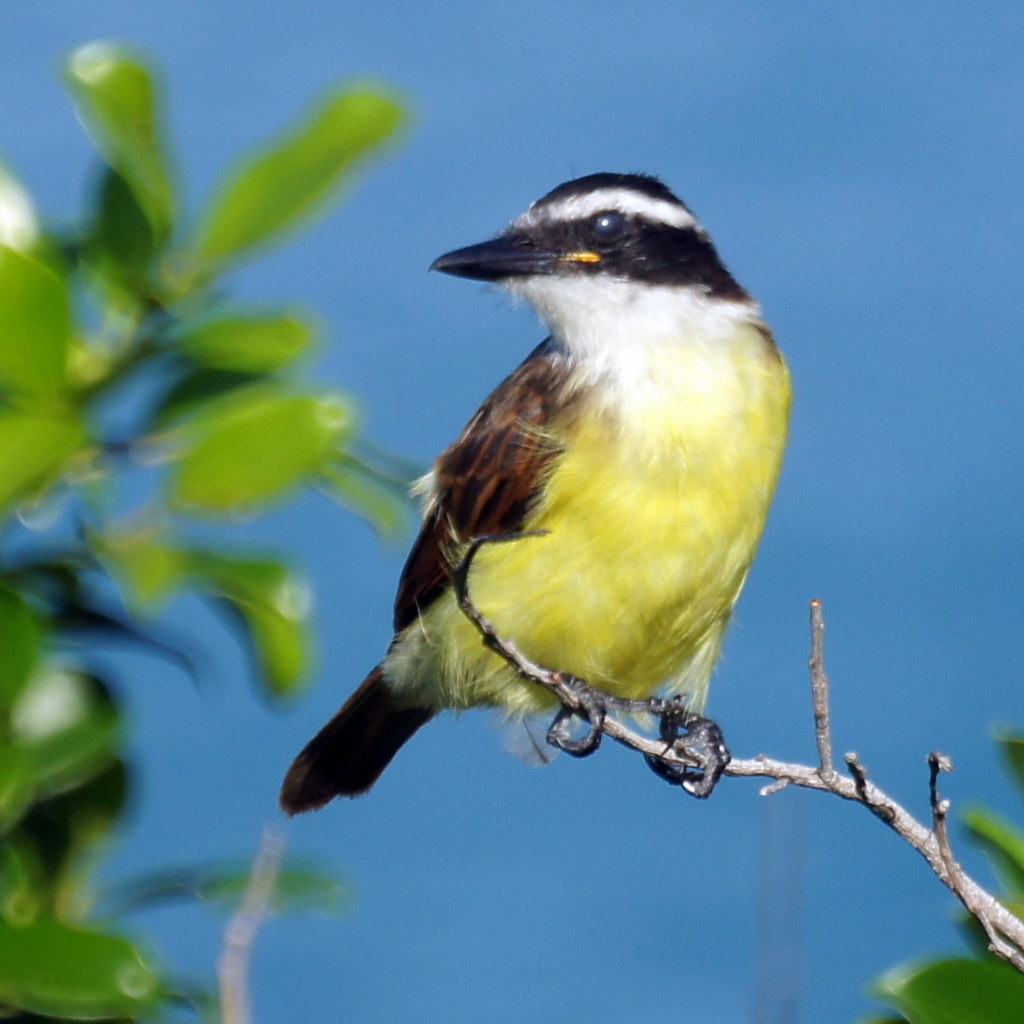FOUR-LETTER BANDING CODES
Bruce Neville
The question of Four-letter Banding Codes (FLBCs) came up the
other night in the Master Naturalist training class. Yes, the FLBCs are official shorthand for
bird names developed by the Bird Banding Lab for data entry, but they have
become a handy device for note-taking in the field and even general
conversation—who says “mourning dove” anymore?
For those unfamiliar, here’s a quick primer.
 |
| MODO, Mourning Dove, Eric Bégin, cc-by-nc-nd. |
First, a few caveats: They’re easier to generate than they
are to “decode” until you get used to them!
Unlike English words, there is no “data redundancy”; every letter has
meaning, and one letter off can change a MODU (mottled duck) into a MODO
(mourning dove)! And finally, for the
uninitiated, they can be a PITA (pain in the arse), so they are banned from
such things as the TexBirds listserv.
So, how do you generate them? Most objects around us have two-part
names. One part tells the general kind
of thing, the genus, as it were:
warbler, sunfish, oak, Obama, Homo. The other part tells the specific kind of
thing, the species: pine warbler, green sunfish, post oak, Michelle Obama, Homo sapiens. FLBCs officially apply only to birds, but you
can adapt them to anything you’re working with, as long as you keep them
separate. So, for birds, RULE ONE: Take
two letters from the first (species) part of the name and two from the second
(genus) part of the name:
- PAlm WArbler = PAWA.
- MOurning DOve = MODO.
- GReen HEron = GRHE.
So far, so good. Now,
if either part of the name contains two parts, hyphenated or not, take one
letter from each part:
 |
MYWA, Myrtle Warbler,
Paul VanDerWerf,, Flickr, cc-by |
- Yellow-Rumped WArbler = YRWA.
- WEstern Scrub-Jay = WESJ.
- Yellow-Crowned Night-Heron = YCNH.
You can also use this system for recognizable
subspecies groups, such as:
- MYrtle (Yellow-rumped) WArbler =
MYWA.
- Yellow-Shafted (Northern) FLicker
= YSFL.
· This is generally extended (Rule 1A) to “if there are four
words anywhere, take one from each,” so, even though “Great Black-Backed Gull”
and “Northern Rough-winged Swallow” are really three-part species names and
one-part genus names, their codes are GBBG and NRWS, respectively.
Occasionally, some things are so distinctive that they can
get by with a single name: killdeer,
avocado, Madonna. (This is forbidden in
scientific names. Even if there’s only
one species in a genus, it must have both a genus and a species name.) In that case, RULE TWO: If there is only part to the name, just take the first four
letters:
- KILLdeer = KILL.
- SORA = SORA.
Not so hard, right?
Well, now the fun begins. Nothing
in life can be quite that simple. Is
“Chuck-will’s-widow” one word or three?
The judges flipped a coin and decided that the official code is
CWWI. Is “American White Pelican” AWPE
or AMWP? Well, it’s a pelican first,
white second, and American third, so its code is AWPE. But Eastern Wood-Pewee is a wood-pewee first
and eastern second, so its code is EAWP.
 |
| CERW, Cerulean Warbler, USFWS, Flickr, cc-by. |
Inevitably, there will be some pairs (or even triplets) of
names that yield the same code. These
are called “collisions.” You’re out
birding Lick Creek Park in migration, and you see a flock of CEdar WAxwings
(=CEWA). A little while later, you see a
CErulean WArbler (=CEWA)! Uh-oh. What’s the first thing you do? WRONG!
You call Betty and me! We need
Cerulean for Brazos County! For some pairs
(if you have to remember whether it was 3 Bar-tailed and 6 Black-tailed Godwits
on the Texas coast you saw the other day, or the other way around, consider it
a good day!) you should be so lucky as to see both on the same day (or
ever). For others, like CArolina,
CAnyon, and CActus WRens (= CAWR), it’s quite possible to see two or even all
three in one day. Some other likely
pairs are:
- Cackling Goose = Canada Goose =
CAGO.
- NOrthern SHoveler = NOrthern
SHrike = NOSH.
- Herring Gull = Heermann’s Gull =
HEGU (if you’re on the west coast, at least).
- Barn Owl = Barred Owl = BAOW.
- Broad-billed Hummingbird =
Buff-bellied Hummingbird = BBHU.
- Blue-throated Hummingbird =
Broad-tailed Hummingbird = BTHU.
- Green Kingfisher = Great Kiskadee
= Gray Kingbird = GRKI.
- Barn Swallow = Bank Swallow (=
Bahama Swallow) = BASW.
- Prairie Warbler = Prothonotary
Warbler = PRWA.
- Blackpoll Warbler = Blackburnian
Warbler = BLWA.
- Black-throated Green Warbler = Black-throated
Gray Warbler = BTGW (warblers seem particularly prone to conflict).
- Lark Bunting = Lazuli Bunting =
LABU.
- Savannah Sparrow = Sagebrush
Sparrow = Saltmarsh Sparrow = SASP.
This list is far from
complete.
So, now we need RULE
THREE: Take THREE letters from the species name and one from the genus name. Where the species are in separate “genera,”
the species name is often the same, so taking one letter from the species name
and three from the genus name (Rule 3A) works better. So the groups above become:
- CEDar Waxwing = CEDW; CERulean
Warbler = CERW.
- Northern SHOveler = NSHO; Northern
SHRike = NSHR (Rule 3A).
- HERring Gull = HERG; HEErmann’s
Gull = HEEG.
- BARn Swallow = BARS; BANk Swallow =
BANS; BAHama Swallow = BAHS.
- CARolina Wren = CARW; CACtus Wren
= CACW; CANyon Wren = CANW.
- PRAirie Warbler = PRAW; PROthonotary
Warbler = PROW.
- LARk Bunting = LARB; LAZuli Bunting = LAZB.
That doesn’t always work, however, so we have to resort to RULE FOUR: Make up the rules as you go
along. Thus the official codes for
some of the other groups are:
- CACkling Goose = CACG; CAnada
GOose = CAGO (did not change).
 |
GKIS, Great Kiskadee,
Mike's Birds, Flickr, cc-by-sa |
- Barn Owl =
BNOW; Barred Owl = BDOW.
- Broad-billed Hummingbird = BBLH;
Buff-bellied Hummingbird = BUFH.
- Blue-throated Hummingbird = BLUH;
Broad-tailed Hummingbird = BTLH.
- Green Kingfisher = GKIN; Great
Kiskadee = GKIS; Gray Kingbird = GRAK.
- Blackpoll Warbler = BLPW;
Blackburnian Warbler = BLBW.
- Black-throated Green Warbler =
BTNW; Black-throated Gray Warbler = BTYW.
- SAVannah Sparrow = SAVS; SageBrush
Sparrow = SBSP; SALtmarsh Sparrow = SALS (Part Rule 3, part Rule 4).
Note that, if using FLBCs for subspecies, HAHA for Harlan’s
(Red-tailed) Hawk creates a collision with Harris’s Hawk; official codes are
HRLH for Harlan’s and HRSH for Harris’s (Rule 4).
The official list from the Bird Banding Laboratory can be
found at
https://www.pwrc.usgs.gov/BBL/MANUAL/speclist.cfm. The Crossley ID guide lists banding codes for
all the species it covers. There is an (apptly-named)
app for the iPhone, Nemesis Code, that can look up FLBCs for species names and
vice versa.
Now, try your hand.
What are the FLBCs for these species, all found around here? (No tricks,
promise. Answers to the “quiz” are
here.)
- Black-bellied Whistling-Duck
- Anhinga
- American Golden-Plover
- Eastern Screech-Owl
- Ruby-throated Hummingbird
- Great Crested Flycatcher
- Horned Lark
- Blue-gray Gnatcatcher
- Black-and-white Warbler
- Le Conte’s Sparrow
And, what do you think these FLBCs might represent (again,
no tricks, all local, only Rules One and Two)?
- MIKI
- MERL
- SCJU
- COGD
- CITE
- LISP
- SACR
- SEOW
- AMWO
- NOPA
And finally, which of these Texas birds do you think has a
FLBC that collides with another bird that occurs (even as a zebra) within North
America?
- Roseate Spoonbill
- Royal Tern
- Tree Swallow
- Brown Thrasher
- Cassin’s Sparrow













